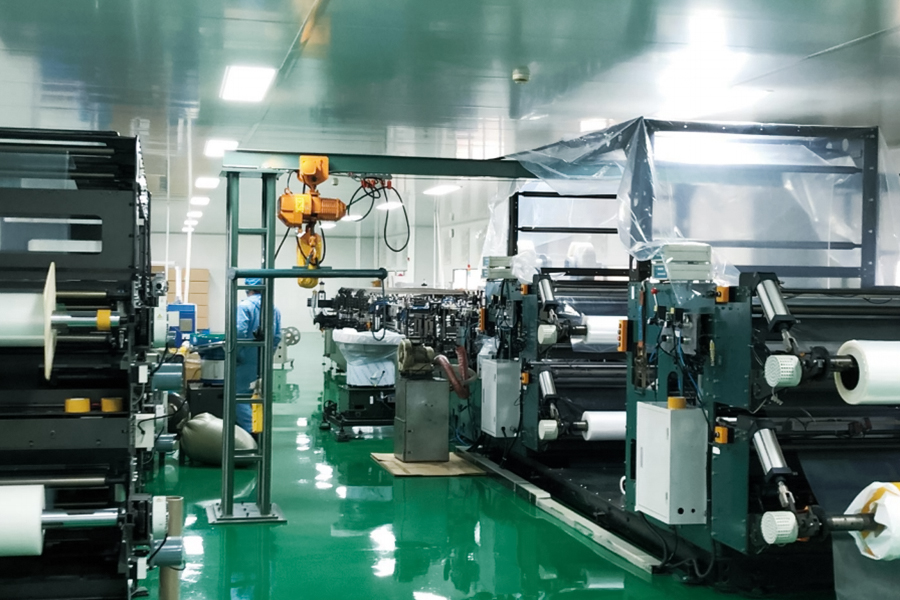

1. Turbulent Flow: The air enters the clean room from t […]
1. Turbulent Flow:
The air enters the clean room from the air-conditioning box through the air duct and the air filter (HEPA) in the clean room, and is returned by the partition wall panels or raised floors on both sides of the clean room. The airflow is in a state of irregular turbulence or eddy current due to non-linear motion. This type is suitable for clean room class 1,000-100,000.
Advantages: simple structure, system construction cost, and easy expansion of clean room. In some special-purpose places, dust-free workbench can be used together to improve the level of clean room.
Disadvantages: The dust particles caused by turbulent flow are not easy to be discharged in the indoor space, and it is easy to pollute the process products. In addition, if the system is stopped and reactivated, it often takes a long time to achieve the required cleanliness.
2. Laminar:
The laminar air flow moves into a uniform straight line. The air enters the room through a filter with a coverage rate of 100%, and returns to the air through the raised floor or the partition panels on both sides. This type is suitable for the environment where the clean room grade needs to be set higher. Use, generally its clean room grade is Class 1~100. It can be divided into two types:
(1) Horizontal laminar flow: The horizontal air is blown out from the filter in one direction, and is returned by the return air system of the opposite wall, and the dust is discharged outdoors with the wind direction. Generally, the pollution is more serious on the downstream side.
Advantages: The structure is simple, and it can become stable in a short time after operation.
Disadvantages: The construction cost is higher than that of turbulent flow, and the indoor space is not easy to expand.
(2) Vertical laminar flow: The ceiling of the room is completely covered with ULPA filters, and the air is blown from top to bottom, which can achieve higher cleanliness. The dust generated during the process or by the staff can be quickly discharged outside without affecting the other work areas.
Advantages: easy to manage, stable state can be reached within a short time after the operation starts, and it is not easy to be affected by the operation state or the operator.
Disadvantages: The construction cost is high, the flexible use of the space is difficult, the ceiling hanger takes up a lot of space, and the maintenance and replacement of the filter is troublesome.
3. Mixed Type:
The compound type is a combination or combination of turbulent flow and laminar flow, which can provide local ultra-clean air.
(1) Clean Tunnel: Use HEPA or ULPA filter to cover 100% of the process area or working area to increase the cleanliness level to above 10, which can save installation and operation costs.
This type needs to isolate the working area of the operator from the product and machine maintenance, so as to avoid affecting the work and quality during the maintenance of the machine. Most of the ULSI processes use this type.
The clean tunnel has two other advantages: A. It is easy to expand elastically; B. It can be easily performed in the maintenance area when repairing equipment.
(2) Clean Tube: Surround and purify the automatic production line through which the product flow passes, and raise the cleanliness level to above 100. Because the product, the operator and the dust-generating environment are isolated from each other, a small amount of air supply can achieve good cleanliness, which can save energy, and an automated production line that does not require manual labor is the most suitable. Applicable to the pharmaceutical, food and semiconductor industries.
(3) Combined with a local clean room (Clean Spot): Raise the cleanliness level of the product process area in a turbulent clean room with a clean room grade of 10,000~100,000 to above 10~1000 for production purposes; clean workbench, Clean work sheds and clean hoods belong to this category.
Clean workbench: Class 1~100.
Clean work shed: In order to enclose a small space with transparent plastic sheets to prevent static electricity in the turbulent clean room space, independent HEPA or ULPA and air-conditioning blower units are used to form a higher-level clean space, with a grade of 10. ~1000 grade, the height is about 2.5 meters, the coverage area is less than 10m2, four pillars and movable wheels are installed, which can be used elastically.

Purification workshop is purification plant wall, top plate is generally more than 50mm thick sandwich color steel plate manufacturing, its characteristics are beautiful, rigid, good insulation performance, easy construction. Rounded corners, doors, window frames and other general use of special aluminum oxide profiles manufactured ground can be used epoxy self-flow flooring or senior wear-resistant plastic flooring, anti-static requirements, anti-static type can be used. Supply and return air ducts made of hot duct zinc plate, paste purification and good insulation effect of flame retardant PF foam plastic plate efficient air outlet with stainless steel frame, beautiful and clean, perforated mesh plate with baking paint aluminum plate.
Cleanroom Classifications:Blow Molding Film Cleanroom
Plastic film purification plant includes blow molding, injection molding, blister molding, extrusion, film and other plastic molding industries. Such workshops in addition to achieving dust-free, but also workshop to maintain a good working environment, while the odor treatment, exhaust gas emissions to deal with environmental protection and other issues.